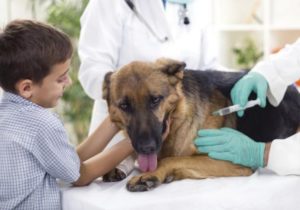DOH partners with other agencies to make the Philippines free from rabies four years from now.
The Department of Health (DOH) is pursuing all efforts in order to make the Philippines become a rabies-free country by 2020.
This is pushed by the Health Department in order also to achieve the global target to eliminate all human deaths from dog-mediated rabies by 2030.
“Rabies is considered a neglected disease that is 100 percent fatal but 100 percent preventable. Effective and safe medicines have been available for decades to prevent the disease in humans and animals,” Health Secretary Paulyn Jean B. Rosell-Ubial said.

She explained that “none of these deaths should have occurred since we have the necessary interventions to prevent rabies such as: (1) promotion of responsible pet ownership, (2) early consultation when bitten by animals and (3) timely administration of vaccines.”
According to the department, the Philippines is a rabies endemic country.
Last year, there were a total of 783,879 animal bites registered in different parts of the Philippines.
In 2013, 200 victims of dog bites died due to the virus infection where 40 percent of bite victims are aged 15 years and below. From 2014 to 2015, animal bites across the country have due to many factors.
Ubial added that the DOH, through its National Rabies Prevention and Control Program (NRPCP) in partnership with different agencies and local government units continue to implement strategies and programs to address the problem on rabies. Included in the programs are Human Vaccination (Post Exposure Prophylaxis (PEP) and Pre-exposure Prophylaxis (PrEP) especially for high risk individuals and students in high incidence zones.
The virus is most commonly transmitted through bites of rabid animals like cat, dog, and others. Rabies virus can also be transmitted to persons through licks of rabid animals on existing scratches and wounds of individuals.
A person who is infected with the virus has the following symptoms: confused state of mind, irritable and anxious behavior, hydrophobic behavior and abnormal increase in salivation may occur weeks or months after virus exposure.
